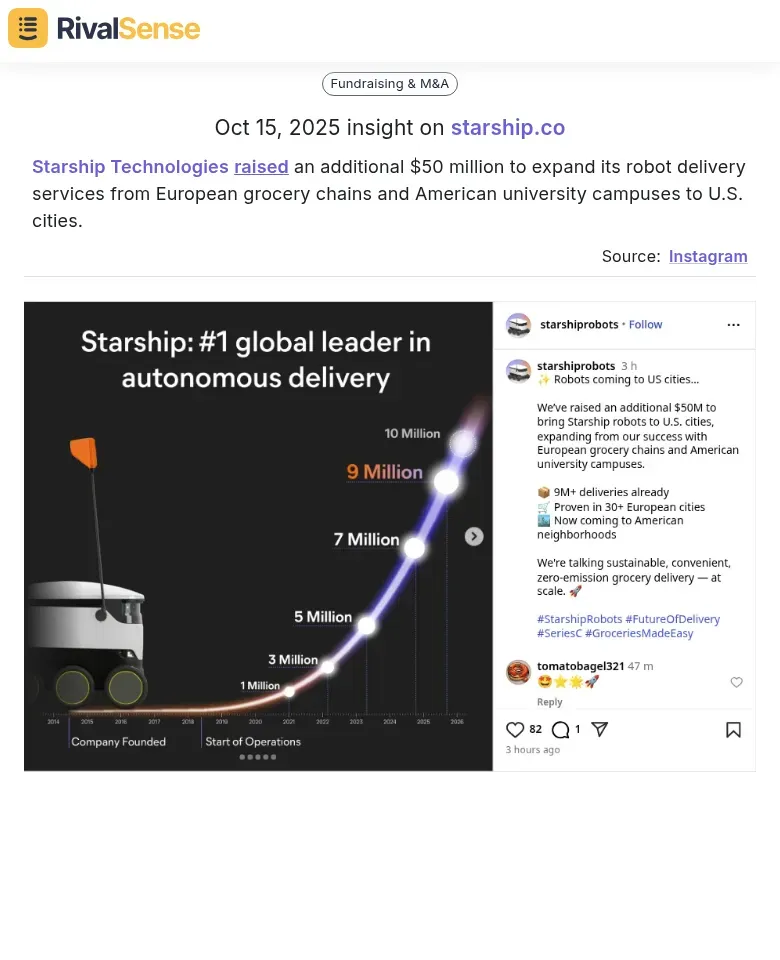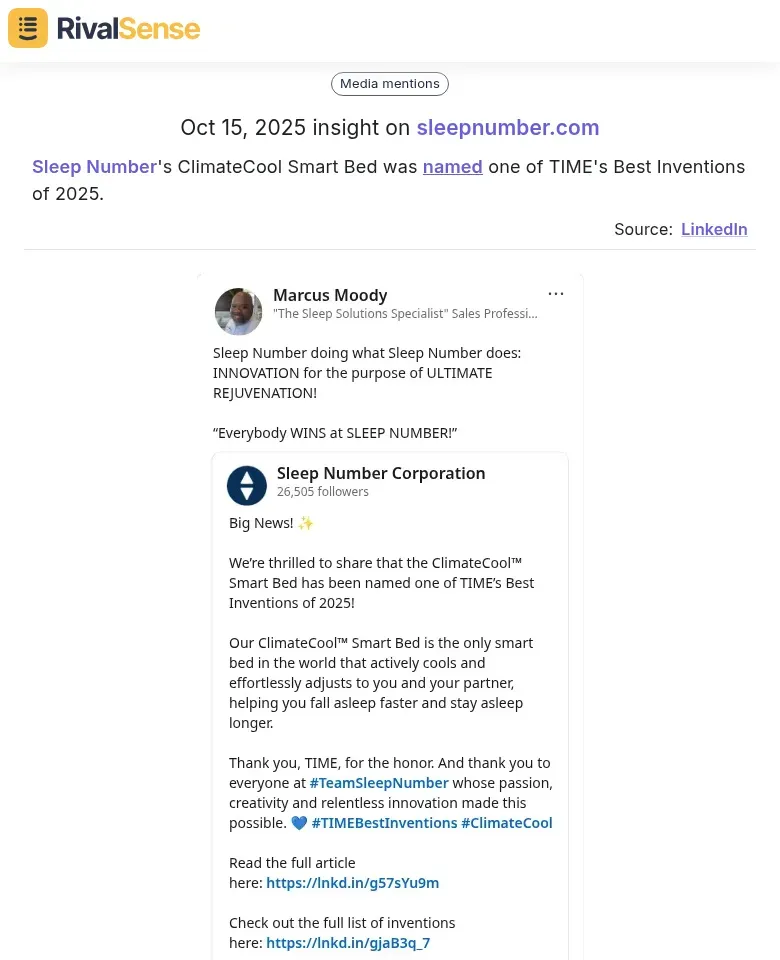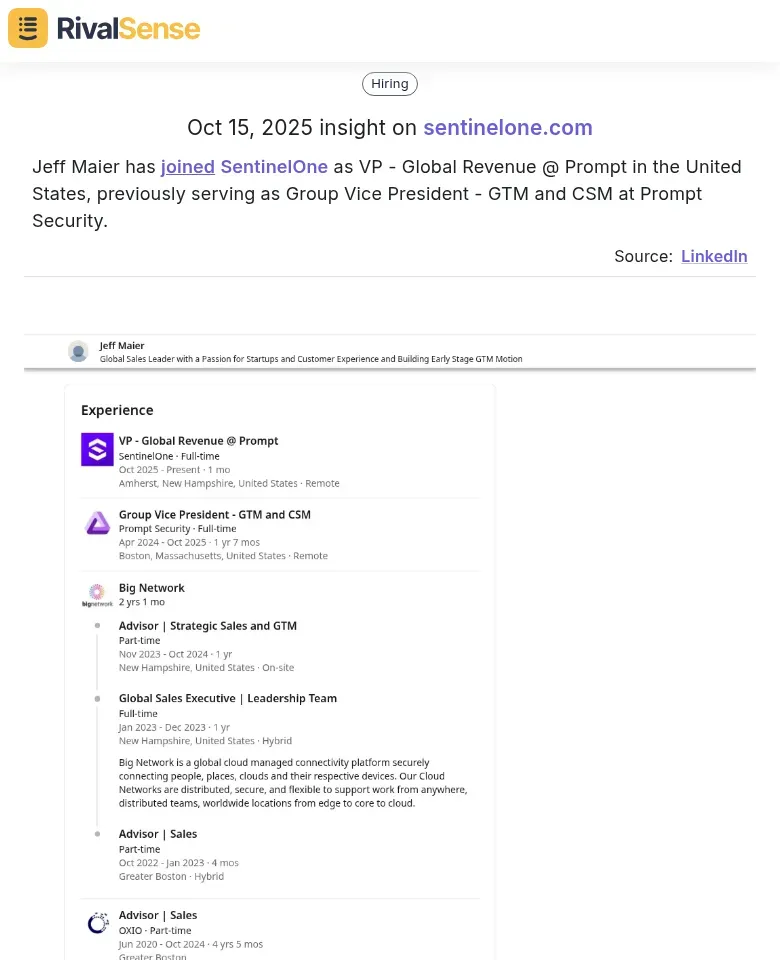How Media Buying Agencies Win with Competitor Customer Service Insights
In media buying, competitor customer service insights are a goldmine for strategic advantage. By analyzing public reviews, support forums, and social media complaints about rival brands, agencies uncover audience pain points, unmet needs, and emotional triggers. This data reveals what customers truly value—or despise—enabling hyper-targeted ad campaigns that resonate deeply. For example, if a competitor's users frequently complain about complex onboarding, your agency can craft messaging emphasizing 'easy setup' and allocate ad spend to platforms where those frustrated audiences congregate.
Practical Steps:
- Monitor competitor review sites (e.g., G2, Trustpilot) and social channels for recurring issues
- Categorize feedback into themes like pricing, usability, or support delays
- Integrate these insights into buyer personas and media plans to refine targeting and creative
Agencies using this approach report higher engagement and ROI by addressing gaps competitors overlook.
Methods for Gathering Competitor Customer Service Intelligence
Gathering competitor customer service intelligence is essential for staying ahead in the competitive media buying landscape. By employing systematic methods, agencies can extract actionable data that informs their strategies. To effectively monitor competitor customer service, leverage tools like social listening platforms (e.g., Brandwatch, Sprout Social) to track reviews, support forums, and social media complaints. Set up alerts for competitor mentions and analyze sentiment using AI-powered analytics to identify recurring issues and pain points. For example, if customers consistently complain about slow response times, this reveals a service gap you can exploit.
Practical Steps:
- Use review management software (e.g., AppFollow) to aggregate feedback from sites like G2 and Trustpilot
- Monitor competitor social channels and forums daily for real-time insights
- Create a dashboard to track sentiment trends and common complaint themes
Ethical Considerations:
- Only collect publicly available data; avoid misrepresentation or deceptive practices
- Respect privacy and intellectual property—never hack or bribe for information
- Follow SCIP's ethical guidelines and your company's code of conduct to maintain integrity and avoid legal risks
Translating Insights into Targeted Media Strategies
Translating competitor customer service insights into actionable media strategies can significantly boost campaign performance. By aligning your messaging with audience pain points, you create more resonant and effective ads. Transform competitor customer service insights into winning media strategies with these actionable steps:
Ad Creative Optimization:
- Analyze competitor review patterns to identify recurring service complaints
- Create ad copy that directly addresses these pain points (e.g., "Tired of slow response times? We guarantee 24/7 support")
- Use negative feedback keywords in your ad targeting to reach dissatisfied customers
Audience Segmentation Refinement:
- Build custom audiences based on service-related behaviors (customer support ticket frequency, complaint keywords)
- Segment by demographics most affected by competitor service gaps (time zones, language preferences)
- Create lookalike audiences from customers who switched from competitors due to service issues
Bidding & Channel Strategy:
- Increase bids for keywords containing competitor names + service complaints
- Prioritize channels where competitor service failures are most visible (social media, review sites)
- Time campaigns to coincide with competitor service outages or peak complaint periods
Quick Checklist: ☐ Monitor 3-5 key competitor review platforms weekly ☐ Map service complaints to your unique value propositions ☐ Test 2-3 ad variations addressing specific service gaps ☐ Set up automated alerts for competitor service disruptions ☐ Track conversion rates from service-focused campaigns
Case Study: Successful Campaigns Driven by Service Insights
Real-world applications show how competitor service insights can lead to campaign success. By studying specific examples, agencies can learn to replicate effective strategies. A media buying agency analyzed competitor customer service data for a SaaS client, discovering that competitors' slow response times (48+ hours) were a major pain point. They crafted ad copy highlighting "24-hour support" and targeted ads to users who had recently complained about competitors on social media. The campaign achieved a 35% higher click-through rate, 22% lower customer acquisition cost, and 15% higher conversion rate compared to previous efforts. Key metrics improved: CTR from 2.1% to 2.8%, conversion rate from 3.5% to 4.0%, and CAC reduced from $120 to $94. Lessons learned: Use tools like RivalSense to track competitor service gaps, integrate real-time data into ad platforms, and A/B test messaging. Replicable strategy: Monitor competitor reviews and complaints, identify service weaknesses, create targeted ads addressing those gaps, and measure ROI adjustments.
Checklist:
- Identify top competitor service issues
- Align ad messaging with resolved pain points
- Target audiences expressing dissatisfaction
- Continuously optimize based on performance data
Implementing a Competitor Service Insight Framework in Your Agency
Establishing a robust framework for competitor service insights ensures continuous improvement in media buying. By integrating monitoring into daily workflows, agencies can stay agile and responsive. Start by setting up continuous monitoring: use tools like RivalSense to track competitor customer service channels (e.g., social media, review sites, support forums). Automate data collection to capture real-time feedback, complaints, and resolutions. Analyze this data weekly to identify recurring issues, response times, and sentiment trends.
Integrate insights into media buying workflows: share findings in team meetings to align creative messaging and targeting. For example, if a competitor's customers complain about slow shipping, highlight your client's fast delivery in ads. Use collaboration platforms (e.g., Slack) to ensure insights reach media planners and strategists promptly.
Measure impact by linking service insights to campaign KPIs: track metrics like click-through rates, conversion rates, and cost per acquisition. If adjustments are needed—say, low engagement on an ad addressing a competitor's weakness—A/B test new creatives or audiences. Regularly review performance dashboards to refine strategies, ensuring data-driven decisions boost ROI. Tip: Create a checklist for monthly audits to stay agile and responsive.
Leveraging Comprehensive Competitor Tracking with RivalSense
While customer service insights are vital, a holistic competitor intelligence approach covers various aspects of competitor activities. Tools like RivalSense provide insights into funding, product launches, awards, management changes, and more, offering a complete picture for strategic planning. By expanding beyond service data, agencies can anticipate broader market shifts and refine their media strategies accordingly.
Here are real examples from RivalSense and why each type of insight is valuable:
-
Funding Insights: When Starship Technologies raised $50 million to expand its robot delivery services, this indicated strategic growth into new markets. Tracking funding rounds helps agencies anticipate increased competition and adjust media budgets to target emerging audiences or counter new initiatives.

-
Product Award Insights: Sleep Number's ClimateCool Smart Bed being named one of TIME's Best Inventions of 2025 highlights product innovation and market recognition. This insight is valuable for identifying competitor strengths, allowing agencies to craft ad messaging that emphasizes their own unique advantages or addresses perceived gaps.

-
Management Change Insights: Jeff Maier joining SentinelOne as VP - Global Revenue signals potential shifts in sales and customer service strategies. Monitoring management changes helps predict how competitors might evolve their approaches, enabling proactive media planning that addresses upcoming challenges or opportunities.

Conclusion: Future Trends and Long-Term Advantages
The future of competitor intelligence in media buying is being reshaped by AI and NLP technologies that can analyze vast amounts of customer service data in real-time, identifying sentiment patterns and emerging issues before they become widespread. To sustain your competitive edge, implement a continuous monitoring system that tracks competitor service channels daily, not just during campaigns. Create a quarterly review process where your team analyzes these insights to refine targeting strategies and messaging.
Practical Steps:
- Use AI tools to automate sentiment analysis of competitor reviews and social media mentions
- Establish a cross-functional team (media, strategy, analytics) to translate service insights into actionable media plans
- Develop a 'competitor service scorecard' tracking response times, resolution rates, and common complaints
The key takeaway: Leading agencies don't just react to competitor moves—they anticipate them by embedding customer service intelligence into their strategic planning, turning competitor weaknesses into your media buying advantages.
Ready to transform your media buying with actionable competitor insights? Try out RivalSense for free today and get your first competitor report to start uncovering valuable data that can drive your strategies forward. Get started now!
📚 Read more
👉 How Merchize's $2.5 Flash Card Launch Fueled Competitor Growth
👉 Case Study: Website Changes Reveal Competitor Market Research
👉 Best Practices for Beauty Retail Key Account Health Dashboards
👉 Actionable Guide to Regulatory Competitor Insights for Key Accounts
👉 How SentinelOne's Event Strategy Offers Valuable Competitor Insights
